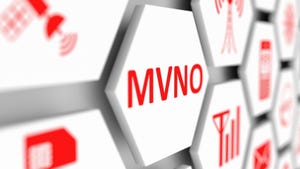Cisco leans on the edge of the IoT world with Microsoft partnership
With IoT becoming increasingly congested there needs to be a strong USP to cut through the noise. Cisco�’s latest plunge into IoT sees the power of edge computing as just that.
May 25, 2017

With IoT becoming increasingly congested there needs to be a strong USP to cut through the noise. Cisco’s latest plunge into IoT sees the power of edge computing as just that.
When launching a new IoT platform which is already fashionably late to the party, as Cisco has just done, there needs to be a bit of a reason. Imagine turning up to a buddy’s birthday two hours late, but then unveiling a couple of bottles of Tequila; all would be forgiven. In simultaneously announcing a partnership with Microsoft Azure, this appears to be what Cisco is trying to do. And what’s the bonus to customers? It’s all about the edge.
The partnership with Microsoft aims to develop hybrid IoT solutions that allow scalable, economical and secure execution of IoT services from the edge to cloud and all points in between. In theory, decisions can be made faster, latency in delivering data is minimized and bandwidth costs can be reduced.
It’s a simple idea, but that is the power of edge computing. Why transport data back to the core if there is an option to perform tasks on-site? Mobile Edge Computing (MEC) might have lost some momentum when it comes to buzzwords, but it in certain circumstances, it is one of the most critical components of the IoT world. Autonomous driving is a perfect example, as the quicker decisions can be made by the vehicle, the better and safer the performance.
“One of the beautiful outputs of connecting ‘things’ is unlocking access to real-time data. Next is turning that data into information and, more importantly, actions that drive business value. In trying to do so, companies are finding themselves deluged with data,” said Macario Namie, Head of IoT Strategy at Cisco Jasper.
“So much so that demand for vast compute and storage needs have arisen, very nicely handled by public cloud providers. But the cost of transport and speed of processing has also increased, which is challenging for many uses cases such as mission-critical services. As a result, many IoT initiatives are now distributing this computing power across the edge network, data centres, and public cloud.”
As part of the collaboration, customers will be able to build and host their IoT applications in Azure, while extending the power of those applications to the edge via Cisco’s Fog computing offering. Customers can, in theory, reduce their IoT deployment costs by only sending the necessary information to the cloud, while processing the rest at the edge.
“Microsoft thinks there is a natural balance between the cloud and the edge in IoT. Why? Cloud is a natural place to manage IoT devices, to collect data from them, gain insights using analytics and then operationalize those insights,” said Sam George Partner Director for Azure Internet of Things at Microsoft. “Edge is a natural place to collect, optimize and react to data with low latency based on the insights generated in the cloud. In this way, cloud and edge work together to help IoT reach its full potential.”
About the Author
You May Also Like










.png?width=300&auto=webp&quality=80&disable=upscale)


_1.jpg?width=300&auto=webp&quality=80&disable=upscale)